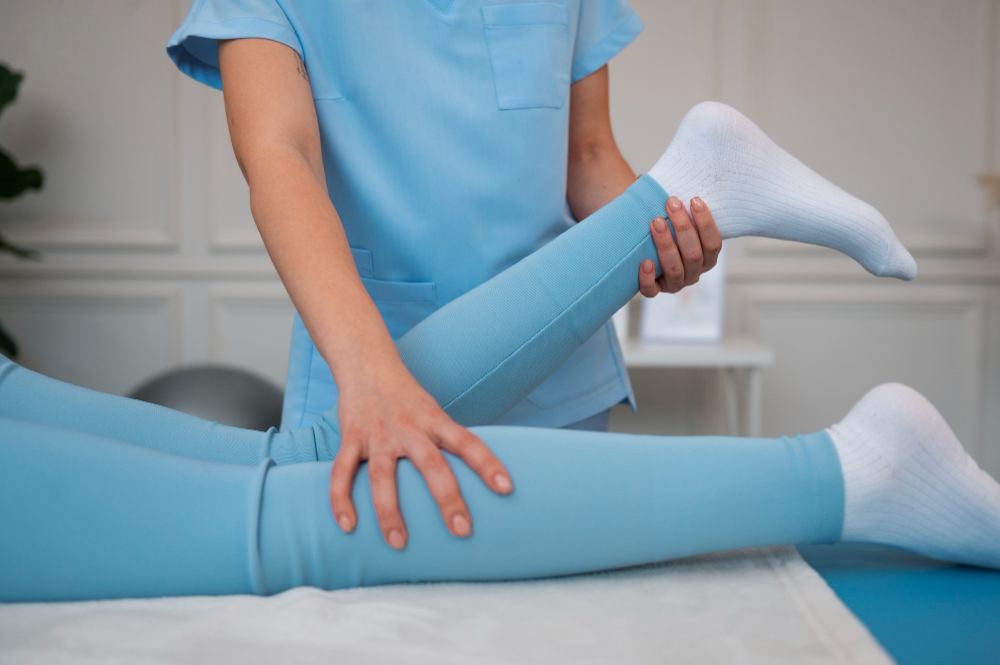Total Knee Replacement Rehab Guidelines: Maximizing Recovery with Physical Therapy

Hamstring injuries are a common setback for athletes and physically active individuals, leading to significant time away from sports and daily activities. Understanding the classification of hamstring injuries and the appropriate rehabilitation strategies is essential for a successful return to form. This blog post dives deep into the nuances of hamstring injury management, offering insights into how physical therapy plays a pivotal role in the recovery process.
The Hamstring Complex
Before we explore the classification and rehabilitation of hamstring injuries, it's crucial to understand what the hamstring is. The hamstring muscle group, located at the back of the thigh, comprises three main muscles: the biceps femoris, semitendinosus, and semimembranosus. These muscles play a vital role in knee flexion and hip extension, crucial movements in running, jumping, and many other athletic activities.
Hamstring Injury Classification
Hamstring injuries are typically classified into three categories based on their severity:
- Grade I: This is a mild strain with a few muscle fibers damaged. Individuals may feel tightness in the posterior thigh but generally retain full strength and mobility.
- Grade II: Representing a partial tear of the muscle fibers, this category causes pain and swelling, with a noticeable loss of strength and mobility.
- Grade III: This is a complete tear of the muscle fibers, often requiring surgical intervention. It is characterized by severe pain, swelling, and a significant loss of function.
Symptoms of a Hamstring Injury
Recognizing the symptoms of a hamstring injury is the first step towards recovery. Common signs include:
- A sudden sharp pain at the back of the thigh, especially during exercise.
- Swelling and tenderness within the first few hours.
- Bruising or discoloration appearing after a few days.
- Weakness in the hamstring when trying to bend the knee or extend the hip.
Rehabilitation Strategies
The rehabilitation of a hamstring injury is a phased process, tailored to the injury's severity and the individual's specific needs. Here’s a general overview:
Phase 1: Acute Injury Management (0-2 weeks)
The focus during this phase is on reducing pain and swelling using the RICE protocol (Rest, Ice, Compression, Elevation). Gentle range-of-motion exercises may be introduced to maintain mobility.
Phase 2: Subacute Rehabilitation (2-6 weeks)
Once pain and swelling are under control, the goal shifts to restoring normal range of motion and beginning to rebuild strength. This includes exercises like stationary biking, hamstring curls, and specific strengthening exercises for surrounding muscles to support recovery.
Phase 3: Advanced Strengthening and Conditioning (6 weeks onwards)
In the final phase, the focus is on regaining full strength and flexibility, with exercises progressively increasing in intensity. Plyometric and agility drills are introduced to prepare the individual for a return to sport or activity.
The Role of Physical Therapy
Physical therapy is integral to each phase of hamstring injury rehabilitation. A licensed physical therapist can provide personalized care that addresses the specific requirements of the injury and the individual’s goals. In Oviedo, FL, clinics like B Physical Therapy specialize in sports-related injuries, offering targeted treatments and rehabilitation plans to ensure a safe and efficient return to peak performance.
Physical therapists employ various techniques, including manual therapy, exercise prescription, and modalities like ultrasound or electrical stimulation, to facilitate recovery. They also play a crucial role in educating patients on injury prevention and how to avoid re-injury once they return to their regular activities.
Preventing Hamstring Injuries
Prevention is always better than cure. Incorporating hamstring-strengthening exercises, ensuring proper warm-up before physical activity, and avoiding overexertion can significantly reduce the risk of hamstring injuries. Regular physical therapy check-ups can also help identify potential risk factors for injuries, allowing for preemptive action to be taken.
Conclusion
Hamstring injuries, while common, don’t have to sideline you for long. With the right approach to classification and rehabilitation, recovery can be swift and effective. If you're seeking physical therapy in Oviedo, FL, and in need of expert care for a hamstring injury or any other musculoskeletal complaint, consider reaching out to a specialized physical therapy clinic like B Physical Therapy. Their team of dedicated professionals is committed to helping you return to your best physical form.
Remember, each hamstring injury is unique, and thus, each rehabilitation plan should be personalized to fit the individual’s specific situation. Always consult with a healthcare professional or a physical therapist for guidance tailored to your injury and needs.